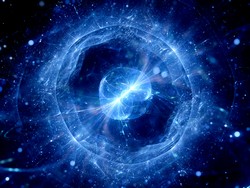Relativity and geons
General relativity, Einstein's theory of space and time, predicts an object called a geon. The theoretical phenomenon is supposedly an electromagnetic or gravitational wave held together by its own energy. The EU-funded GRAVITYWAVESTARS (Localized objects formed by self-trapped gravitational waves) project studied how gravitational waves form geons. The team developed new mathematical solutions for the equations of gravitation. Challenges included construction of geons, investigation of their stability and lifetime, and study of geon consequences for the universe. Other aspects of the research included systems in condensed matter physics and quantum chromodynamics. Team researchers attacked the complicated vacuum gravitational wave problem by first considering a simpler aspect of the problem: a self-gravitating massless scalar field. They derived a family of mathematical solutions concerning the expansion of spacetime. A second study phase investigated localised vacuum gravitational wave structures, called AdS geons. The consortium studied such objects using two complementary methods. Members overcame the difficulty of generalising an existing solution to higher order perturbations. The extremely technical and mathematical study may ultimately find application in the study of dark matter. Yet, the project's solutions do not require exotic new kinds of matter.



